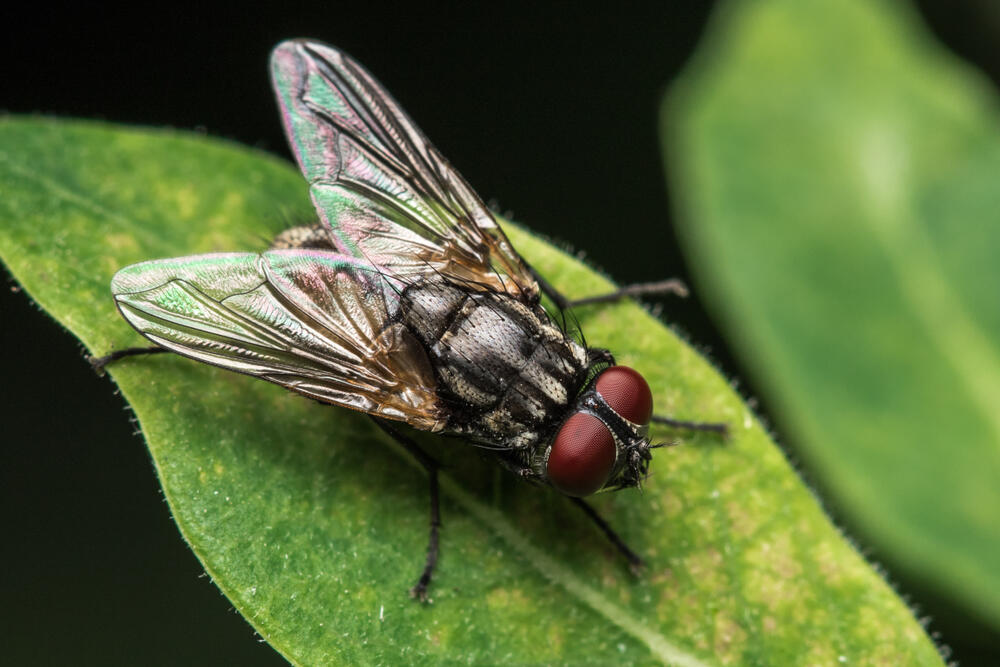Getting your Trinity Audio player ready...
Last week, scientists announced a significant milestone in neurobiological research with the publication of a comprehensive map of the fruit fly brain in nine papers in Nature. The research details how the connectivity of 139,255 neurons and over 54.5 million synaptic connections in the brain of a female fruit fly (Drosophila melanogaster) could provide insights into brain function across the animal kingdom, including humans.
A multinational team, known as the FlyWire Consortium and involving nearly 300 researchers from 127 institutions worldwide, collaborated to create this comprehensive map. To achieve this feat, the researchers sliced the fruit fly brain into 7,000 ultra-thin sections, each 40 millionths of a millimeter thick, and captured over 21 million high-resolution electron microscope images. Advanced artificial intelligence algorithms were then used to reconstruct the shapes and connections of all the neurons, resulting in a detailed three-dimensional map of the brain.
Despite the advanced AI, manual corrections were necessary for over three million errors, with citizen volunteers contributing significantly to the exhaustive proofreading process. "This is like a Google Maps of the brain," said Gregory Jefferis from the University of Cambridge. "You need both for the map to be really useful."
Previously, only the wiring diagrams for simpler organisms, like the nematode worm Caenorhabditis elegans with 302 neurons and a fruit fly larva with 3,016 neurons, had been completed. Mapping the entire brain of an adult fruit fly represents a significant advancement in neuroscience. "Mapping the fly brain is really extraordinary and will help us understand how our own brain works," remarked Dr. Jefferis.
The fruit fly's brain, although minute—about the size of a poppy seed—contains approximately 139,000 neurons and roughly 150 meters of neural wiring. In comparison, the human brain has about 86 billion neurons, making it approximately a million times more complex. Sebastian Seung of Princeton University emphasized the broader implications, stating, "Many of you may wonder, why should we care about the fruit fly brain? My answer is simple: if we can really understand how any brain works, it will tell us something about all brains."
Fruit flies exhibit complex behaviors such as navigation, courting, memory, and social interactions, paralleling some functions of human brains. This makes them invaluable as model organisms in neuroscience research. "Flies are an important model system for neuroscience. Their brains solve many of the same problems as ours," said Mala Murthy, a co-founder of the FlyWire Consortium and co-senior author on the flagship paper.
The detailed connectome could provide new insights into brain disorders such as Parkinson's and Alzheimer's disease, potentially advancing future treatments. The research revealed that understanding the wiring of the brain is crucial for grasping how neurons connect to facilitate both healthy function and the development of diseases. John Ngai, director of the BRAIN Initiative at the National Institutes of Health, stressed, "We can't fix what we don't know," highlighting the necessity of understanding neuronal connections to address brain disorders.
Despite the challenges, the team utilized advanced AI to accelerate the process, marking a significant achievement in brain mapping. "It is a demonstration of how AI can advance neuroscience," stated Dr. Seung. However, manual corrections were still necessary due to imperfections in the AI, emphasizing the collaborative effort of the scientific community.
Researchers believe that in 30 years, it may be possible to have a human connectome, though the task remains formidable due to the immense complexity of the human brain. Recent advances in technology are crucial, as the human brain is much larger and more complex than a fruit fly's, making comprehensive mapping challenging.
The mapping feat is considered a significant scientific milestone in neuroscience, with some experts suggesting it could be in the running for a future Nobel Prize. The fruit fly connectome is now available to any scientist wishing to use it to guide their research, providing an unprecedented resource for studying complex behaviors and neurological functions.
By studying the fruit fly's brain, scientists hope to learn more about how all brains work, including human brains. This research could lead to a better understanding of the human nervous system through insights gained from the fruit fly's connectome mapping. As Dr. Jefferis noted, "Mapping the fly brain is a truly remarkable piece of work and will help us seriously grasp how our own brains work."
This article was written in collaboration with Generative AI news company Alchemiq
Sources: BBC, El Comercio Perú, La Nacion, ScienceAlert, Deutsche Welle, El Periódico, France 24, La Jornada, Reuters, Nature, Washington Post, NPR, Süddeutsche Zeitung


